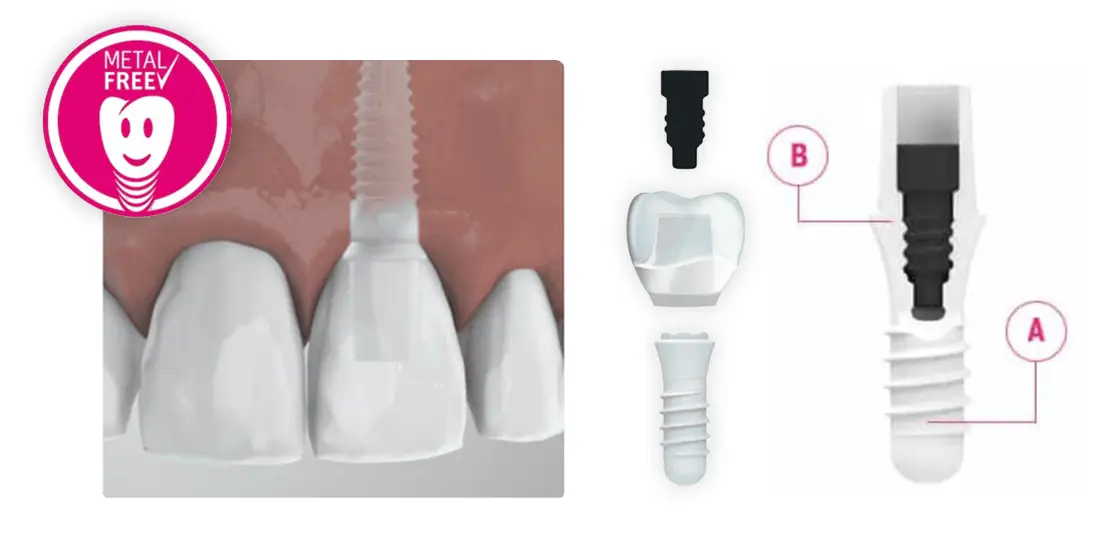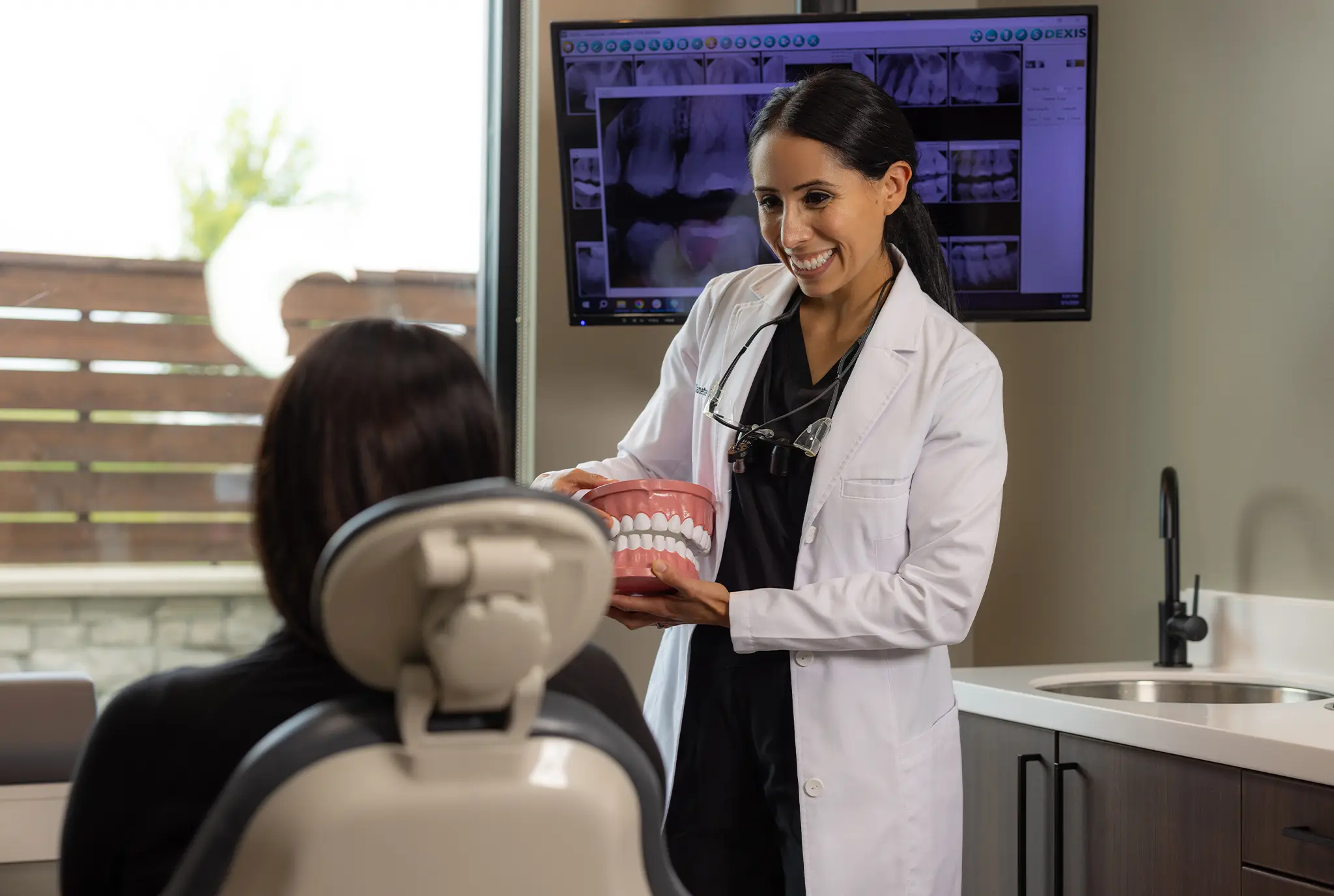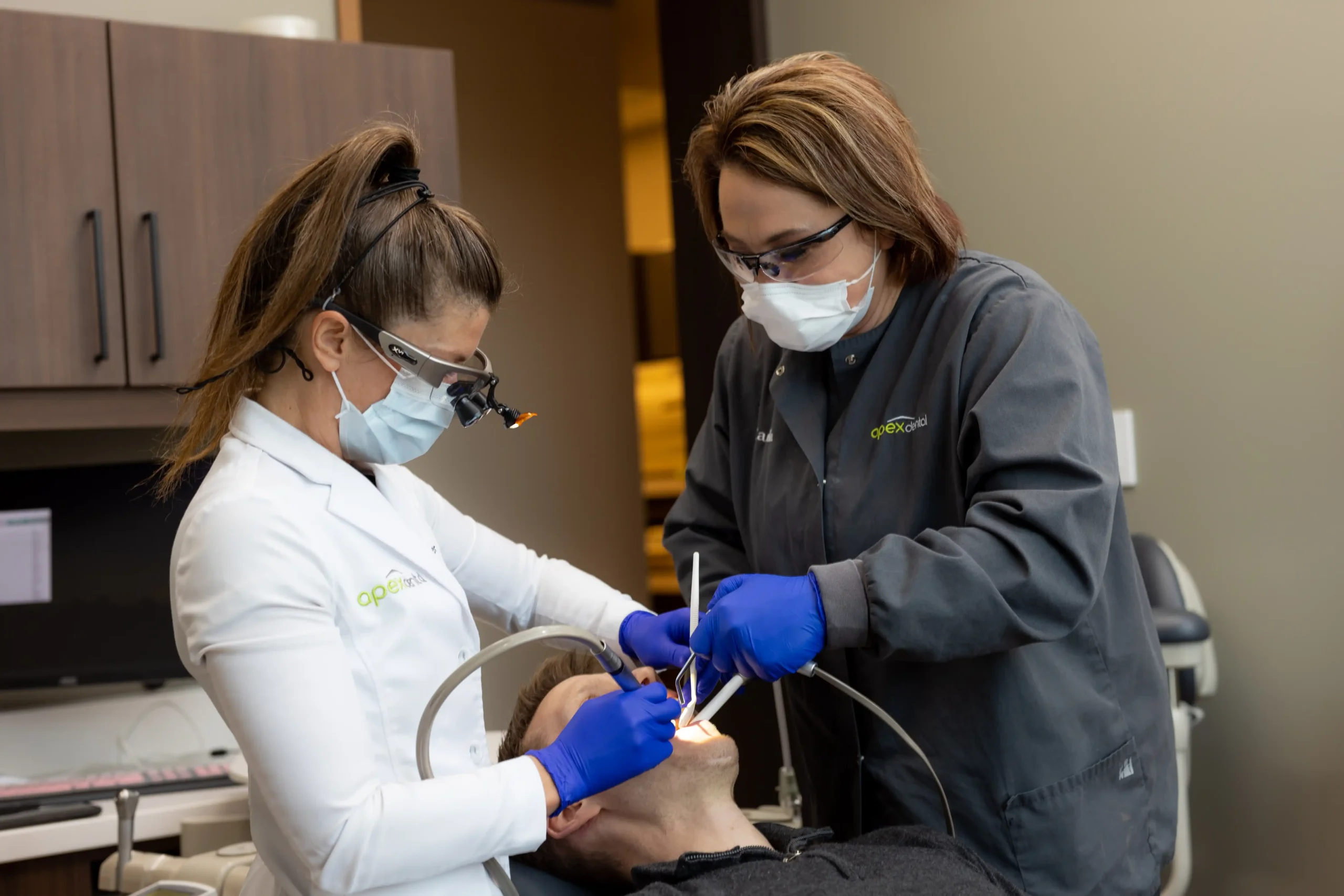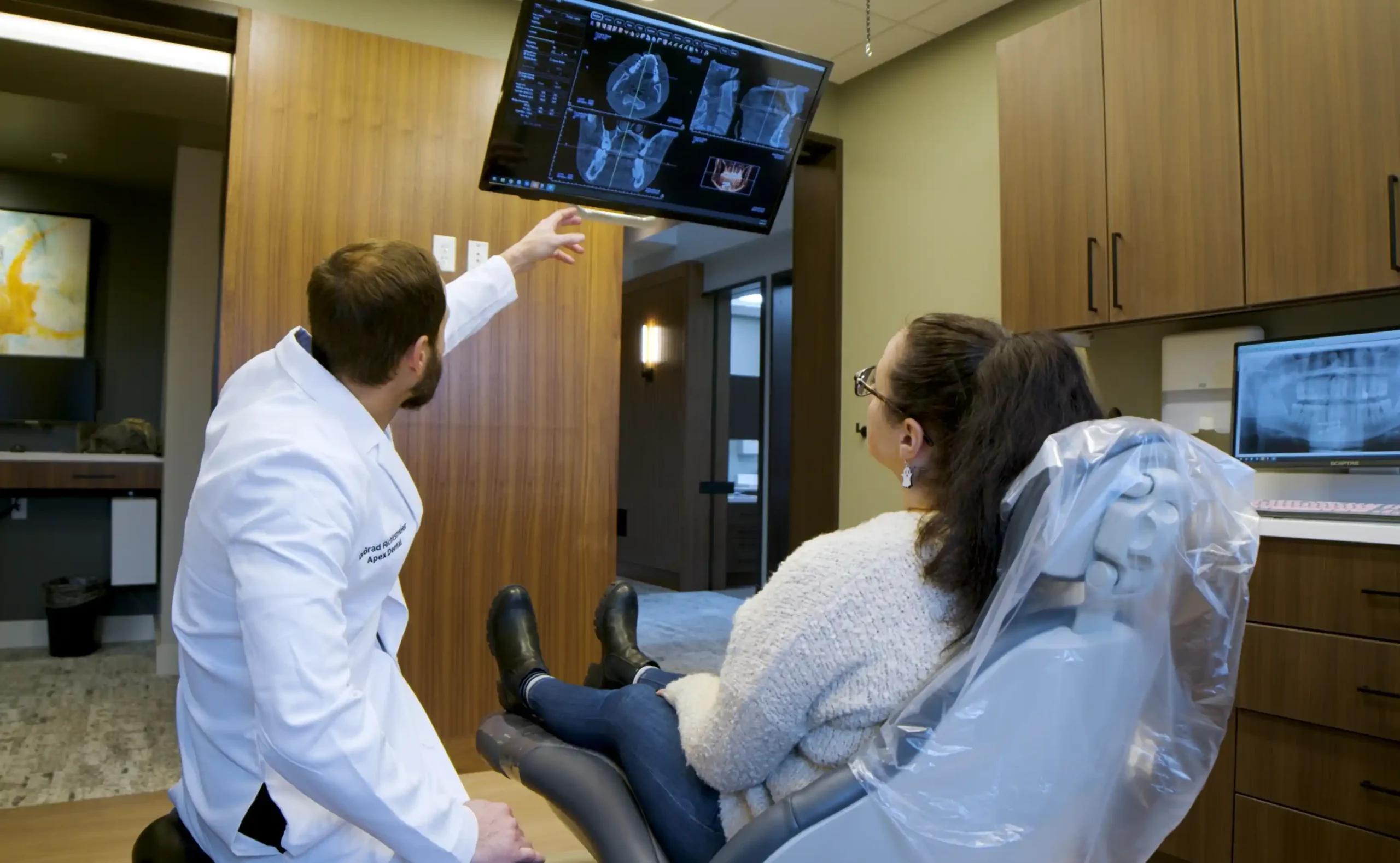Ceramic Implants

What is a Ceramic Dental Implant?
In the ever-evolving world of dental care, there’s a growing trend towards metal-free solutions. This movement is driven by a heightened awareness of biocompatibility, aesthetics, and the desire to provide patients with options that align closely with the natural functionality and appearance of teeth. Ceramic dental implants have emerged as a prominent part of this trend, offering a comprehensive alternative to traditional metal-based implants.
A dental implant is an artificial tooth root that becomes securely embedded as the surrounding bone grows around it. After the time required for healing, the implant is provided with an abutment onto which the actual crown or bridge is placed. Even if you are missing all of your teeth, the implants serve as a base for the crowns and bridges or removable dentures. This system allows your teeth to be restored both functionally and aesthetically.
A ceramic dental implant consists of three main components:
- The Implant (fig A): This is the root replacement made of zirconium dioxide, a non-metallic and highly biocompatible material. It is surgically placed in the jawbone, where it will fuse with the bone over time, forming a sturdy foundation for the replacement tooth. The surface structure is optimized by sandblasting and etching so that osteoblasts can grow directly on the implant and a firm adhesion to the jaw bone can be achieved.
- The Screw Abutment (fig B): Featuring cutting-edge carbon fiber technology, the screw attachment within the ceramic implant further ensures a metal-free connection. This screw provides a strong, form-fitted link between the implant and the restoration, and it’s specially designed to minimize bacteriological colonization or deposit.
- The Restoration (Crown): This is the visible part of the tooth, custom-made to match the shape, size, and color of the surrounding natural teeth. It’s attached to the abutment and provides the functionality and aesthetics of a natural tooth.
Why Choose Ceramic Dental Implants?
In a time when the preference for natural, holistic, and metal-free dental solutions is growing, ceramic dental implants present a compelling choice. But what makes them stand out? Here’s a quick glance at the distinctive features that might make ceramic implants the right option for your smile.
Metal-Free Nature
If you have experienced sensitivities or reactions to certain metals, such as jewelry, you may be particularly drawn to ceramic implants. Unlike traditional titanium implants, ceramic implants are crafted entirely from non-metallic materials. By opting for ceramic, you embrace a solution that doesn’t conduct electricity or heat, providing a gentler and more body-friendly experience. This material choice could minimize potential reactions in your body, offering a compatible and comfortable alternative.
Minimizing Risk Factors
Research shows that certain risk factors associated with peri-implantitis (a potential complication that can lead to implant loss) are reduced with ceramics. The low affinity for plaque and absence of metallic elements contribute to a healthier oral environment.
Aesthetic Considerations
Ceramic implants come very close to the natural model of a tooth root in both aesthetics and function. They provide a visually pleasing alternative, free from dark shadows or visible metal, that harmonizes with your natural teeth.
Strength and Longevity
Despite their metal-free composition, ceramic implants are robust and durable, promising a long-lasting solution that withstands daily use. The specially designed screw provides an incredible bond between the ceramic elements, ensuring stability and resilience.
Biocompatibility
Highly compatible with the body’s tissues, ceramic implants offer a hypoallergenic option, reducing the risk of allergic reactions or sensitivities. Their design intricately minimizes crevices and spaces where bacteria could potentially thrive, making it an excellent choice for maintaining oral hygiene and overall health.
Optimum Blood Circulation Through the Gums
One of the remarkable attributes of ceramic implants made from zirconium dioxide is their ability to mimic the natural tooth’s role in promoting healthy blood circulation in the gums. Research shows that the blood circulation in the gingiva around zirconium dioxide is comparable to that around a natural tooth. This is a vital aspect of maintaining healthy, vibrant gum tissue and contributes to the overall aesthetics and health of the smile. In contrast, studies have noted that blood circulation in the gingiva around titanium can be significantly lower.
Conclusive Osseointegration
Osseointegration is the process by which a dental implant fuses with the jawbone, creating a strong and stable foundation for the restoration. Ceramic implants, especially those with a surface structure optimized by sandblasting and etching, excel in this critical aspect. The treated surface encourages osteoblasts, the cells responsible for bone formation, to grow directly on the implant, allowing for firm adhesion to the implant surface. This conclusive osseointegration ensures that the implant is securely anchored, contributing to its long-term success and patient comfort.
WHAT’S RIGHT FOR YOU?
Ceramic vs. Titanium Implants
Titanium implants have been a cornerstone of dental restoration for over 65 years, known for their strength, versatility, and extensive scientific backing. However, some patients may prefer a non-metallic option or have rare allergic reactions to titanium.
Ceramic implants offer an esthetically pleasing white color, providing a natural appearance and are also soft-tissue-friendly with less attraction to plaque and bacteria. They’ve become a growing trend in dental practices, especially for those concerned with aesthetics or preferring a metal-free option.
Dr. Brad and our team are ready to discuss these options with you and help you choose the right material for your unique needs. Whether it’s the proven success of titanium or the appealing aesthetics of ceramic, we offer both to ensure that your dental implant is tailored to your preferences.
Ready to love your smile?
Make your next appointment and experience dental care that puts YOU first.

Dentists who put your comfort, confidence, and whole health first.
725 S 51st St, West Des Moines, IA 50265
515.224.1618
Monday–Thursday, 8AM–5PM









